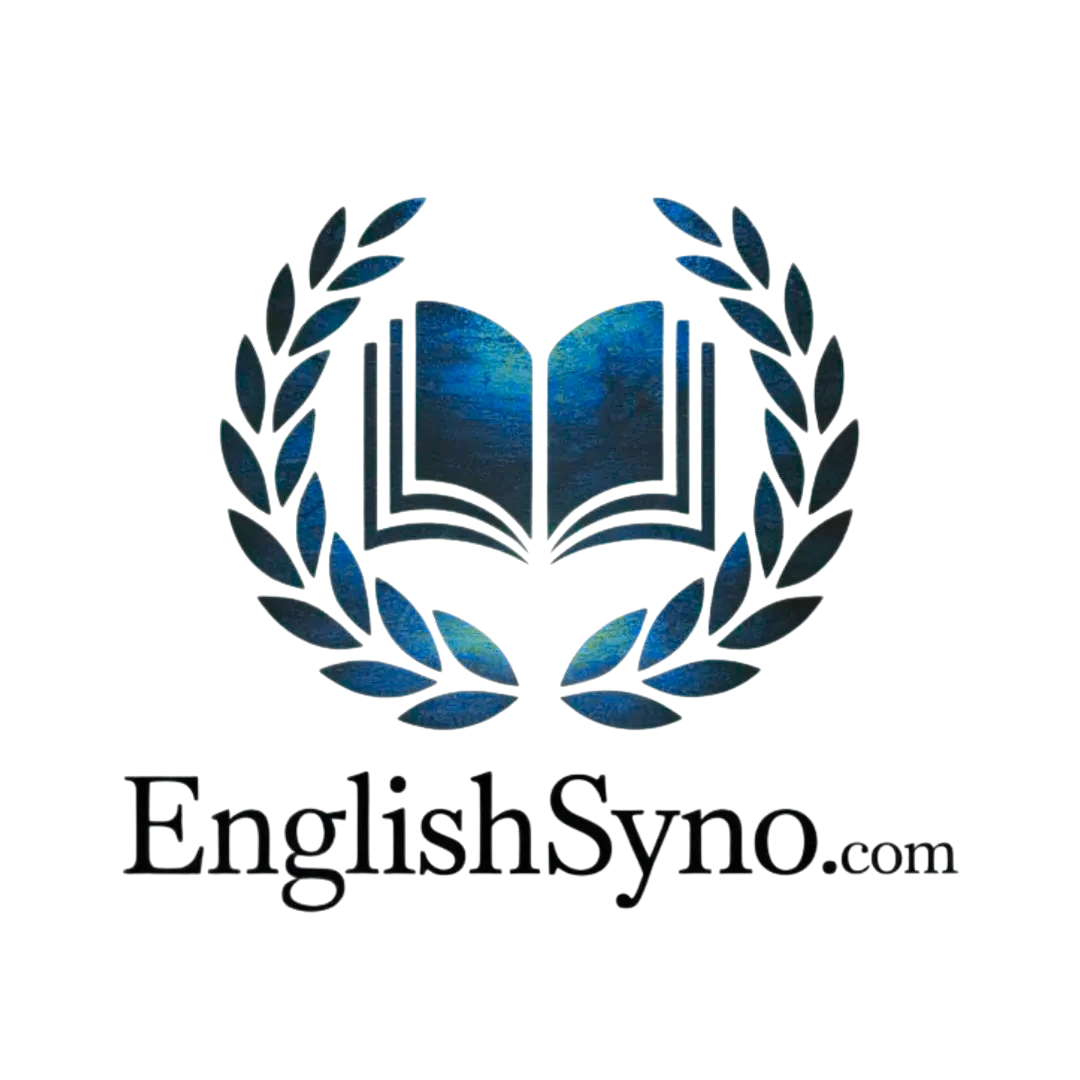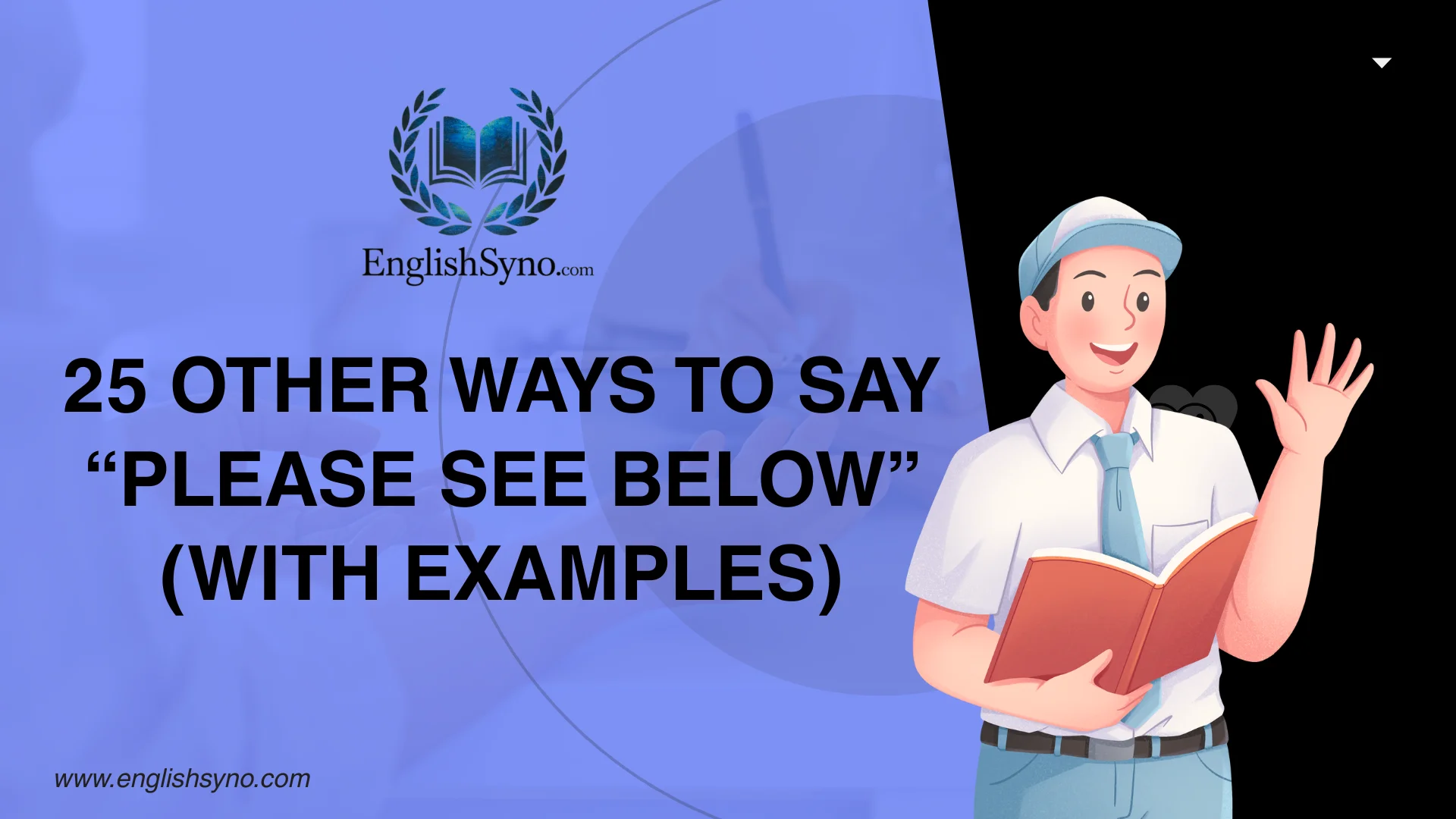During my years of writing professional emails, I often noticed that the phrase “please see below” is commonly used in business communication. Its goal is to direct the reader toward specific information that appears further down in a document, attachment, or the body of an email itself. While widely understood, some people feel it sounds outdated or even lazy, yet my experience shows that when colleagues asked me to find details, it felt much clearer when they simply chose to present what was requested right away.
I often suggest alternative approaches, like summarizing main ideas or using bullet points for clarity. This method keeps the flow simple, makes presenting easier, and helps others focus without the need for an introductory signal. In meetings, I’ve shared that if something important must be emphasized, just highlight it in the document itself. Over time, I’ve seen this small shift change teams and the way they write, proving that efficiency in words matters more than tradition.
What Does “please see below” Mean?
The phrase “please see below” simply directs the reader to look at the information that is provided further down in an email or document. It is a way of drawing attention without repeating the content itself.
When to Use “please see below”
You can use “please see below” when you want to provide instructions, clarifications, or details that follow in the same message. It’s common in business communication, professional emails, or formal reports where information flows in a structured way.
Is it professional or polite to say “please see below”?
Yes, “please see below” is professional and polite, but it may sometimes come across as formal or outdated. Using warmer or more natural alternatives can make the tone feel caring and friendly without losing professionalism.
Pros or Cons
Pros:
- Clear and easy to understand.
- Works in business and professional settings.
- Keeps communication direct.
Cons:
- It can sound outdated.
- May feel lazy if used often.
- Less personal compared to warmer alternatives.
Kindly review the details below
Meaning/Explanation: A softer, polite way to request attention to the content further down. Adds warmth while staying professional.
Detailed Example Email:
Hello Sarah,
Kindly review the details below regarding the project timeline. Please let me know if anything needs adjustments.
Best Use: Formal professional emails where respect and politeness are important.
Worst Use: Casual messages where such formality feels stiff.
Tone: Polite, respectful, and considerate.
You’ll find the information below
Meaning/Explanation: This phrase is used to direct someone without being too formal. Keeps the tone neutral.
Detailed Example Email:
Hi Mark,
You’ll find the information below that covers the updated pricing list.
Best Use: Professional settings where neutrality works.
Worst Use: When you want to express warmth or empathy.
Tone: Neutral, straightforward.
Please refer to the details below
Meaning/Explanation: A formal alternative often used in official communication.
Detailed Example Email:
Dear Client,
Please refer to the details below for our updated service terms.
Best Use: Contracts, formal notices, or business emails.
Worst Use: Friendly or personal messages.
Tone: Formal, serious.
Here are the details you requested
Meaning/Explanation: Makes the message personalized and shows care for the receiver’s needs.
Detailed Example Email:
Hi Emma,
Here are the details you requested regarding the training schedule.
Best Use: One-on-one communication where you’re responding to a request.
Worst Use: Mass emails or automated responses.
Tone: Helpful, thoughtful.
For your review, please see the following
Meaning/Explanation: Frames the information as something important that requires attention.
Detailed Example Email:
Hi Team,
For your review, please see the following project milestones listed below.
Best Use: Team updates or reports.
Worst Use: Informal conversations.
Tone: Professional, organized.
Below is the information you need
Meaning/Explanation: Clear and direct, cutting unnecessary words.
Detailed Example Email:
Hello John,
Below is the information you need to complete your part of the task.
Best Use: When clarity and efficiency matter.
Worst Use: When warmth and care are important.
Tone: Direct, efficient.
As outlined below
Meaning/Explanation: Suggests that the details are already well-prepared and structured.
Detailed Example Email:
Hi Alex,
As outlined below, you’ll find the full project workflow.
Best Use: Organized reports and structured documents.
Worst Use: Casual chats or quick notes.
Tone: Professional, organized.
Please take a look at the information below
Meaning/Explanation: A friendlier and more caring version of the original phrase.
Detailed Example Email:
Hi Jessica,
Please take a look at the information below regarding tomorrow’s event.
Best Use: Semi-formal or polite emails.
Worst Use: Very formal or legal communication.
Tone: Warm, polite.
Here’s what you need to know
Meaning/Explanation: Puts the focus on being helpful and simplifying communication.
Detailed Example Email:
Hi Daniel,
Here’s what you need to know before the client meeting.
Best Use: Quick updates or supportive guidance.
Worst Use: Strictly formal settings.
Tone: Helpful, supportive.
Kindly find the details below
Meaning/Explanation: Similar to the original but feels slightly more polite and formal.
Detailed Example Email:
Dear Mr. Khan,
Kindly find the details below for the upcoming review.
Best Use: Business letters, client communication.
Worst Use: Friendly, casual emails.
Tone: Polite, formal.
You’ll see the details outlined below
Meaning/Explanation: Suggests that the information is structured and ready for quick understanding.
Detailed Example Email:
Hello Peter,
You’ll see the details outlined below regarding the travel plan for next week.
Best Use: Organized updates or scheduling.
Worst Use: Informal back-and-forth chats.
Tone: Clear, professional.
Below, you will find the requested details
Meaning/Explanation: Shows care by linking the details directly to what the reader requested.
Detailed Example Email:
Hi Sarah,
Below, you will find the requested details for your budget proposal.
Best Use: Responding to a request.
Worst Use: Unsolicited communication.
Tone: Respectful, thoughtful.
For your convenience, the information is below
Meaning/Explanation: Adds empathy, showing the information is presented for their ease.
Detailed Example Email:
Dear Client,
For your convenience, the information is below regarding our delivery schedule.
Best Use: Customer-focused emails.
Worst Use: Legal or strictly formal notices.
Tone: Empathetic, caring.
The following information may help
Meaning/Explanation: Sounds supportive and positions the details as a helpful resource.
Detailed Example Email:
Hi James,
The following information may help you finalize the presentation.
Best Use: Guiding colleagues or teammates.
Worst Use: Formal or contract settings.
Tone: Helpful, friendly.
Here’s the breakdown below
Meaning/Explanation: Casual but clear, perfect for explaining summaries.
Detailed Example Email:
Hi Team,
Here’s the breakdown below of the Q3 results.
Best Use: Team or project updates.
Worst Use: Client-facing formal notes.
Tone: Casual, direct.
Let me share the details with you
Meaning/Explanation: Personal, like speaking to the reader directly.
Detailed Example Email:
Hello Maria,
Let me share the details with you about the training program.
Best Use: Friendly professional communication.
Worst Use: Formal contracts.
Tone: Personal, warm.
Here are the points you asked for
Meaning/Explanation: Makes the email reader-centered by acknowledging their request.
Detailed Example Email:
Hi David,
Here are the points you asked for about the budget review.
Best Use: When following up on specific queries.
Worst Use: Generic mass updates.
Tone: Helpful, polite.
Please go through the following
Meaning/Explanation: A neutral but polite direction.
Detailed Example Email:
Dear Team,
Please go through the following guidelines before the client meeting.
Best Use: Group emails or updates.
Worst Use: Personal, casual notes.
Tone: Polite, neutral.
Here are the key details below
Meaning/Explanation: Highlights importance by pointing out key details.
Detailed Example Email:
Hi Liam,
Here are the key details below that will help finalize your report.
Best Use: Summarized business communication.
Worst Use: Long, detailed reports.
Tone: Focused, direct.
I’ve listed the information below
Meaning/Explanation: Shows effort by presenting the details clearly.
Detailed Example Email:
Hi Nina,
I’ve listed the information below about your requested updates.
Best Use: When organizing details for clarity.
Worst Use: Overly formal or legal communication.
Tone: Organized, thoughtful.
Here’s the summary below
Meaning/Explanation: Positions details as a concise version of larger content.
Detailed Example Email:
Hi Robert,
Here’s the summary below from the last board meeting.
Best Use: Recaps or quick briefs.
Worst Use: Detailed technical communication.
Tone: Concise, efficient.
Take a look at the section below
Meaning/Explanation: Informal but guiding, inviting the reader to check.
Detailed Example Email:
Hi Alex,
Take a look at the section below for new deadlines.
Best Use: Internal communication.
Worst Use: Formal corporate messaging.
Tone: Casual, inviting.
The following should answer your question
Meaning/Explanation: Assures that details are sufficient.
Detailed Example Email:
Hi Jenny,
The following should answer your question about system access.
Best Use: Replying to inquiries.
Worst Use: Large, generic updates.
Tone: Supportive, clear.
Please review the following notes
Meaning/Explanation: Slightly formal but thoughtful way to request attention.
Detailed Example Email:
Hi Team,
Please review the following notes before next week’s meeting.
Best Use: Team collaborations.
Worst Use: Friendly conversations.
Tone: Professional, clear.
I’ve provided the information below
Meaning/Explanation: Polite and straightforward, showing you’ve taken action.
Detailed Example Email:
Hi Client,
I’ve provided the information below for your quick reference.
Best Use: Professional follow-ups.
Worst Use: Overly casual settings.
Tone: Polite, professional.
Final Thoughts
Finding the right alternative to “please see below” is more than just swapping one phrase for another—it’s about shaping how your message feels to the reader. The tone you use can set the stage for clarity, respect, and even warmth in your communication. By choosing the right words, you show that you are not only providing information but also thinking about how it will be received.
In professional emails, it’s easy to rely on standard phrases, but that can sometimes make your writing feel distant or outdated. When you use options like “Here are the details you requested” or “For your convenience, the information is below”, you add a touch of empathy. This small shift helps build trust and ensures that your message comes across as polite and thoughtful.
These alternatives also let you adapt to different scenarios—whether you need to be highly formal with a client, casual with a colleague, or clear in a team update. Every choice you make strengthens how effectively your message lands. At the end of the day, the way you present details matters just as much as the details themselves. So, the next time you draft an email, remember: choosing words with care makes your communication more personal, impactful, and memorable.
FAQs
What does “please see below” mean?
It directs the reader to check information provided further down in an email or document. It’s a simple, professional way to highlight content.
Is “please see below” a professional term?
Yes, it’s professional, but it may sound outdated or too formal in some contexts. Warmer alternatives often feel more engaging and modern.
When should I use “please see below”?
Use it when you’re referencing details, attachments, or instructions that follow in the same email or document. It keeps things clear and direct.
What are better alternatives to “please see below”?
Alternatives include “Kindly review the details below,” “Here are the details you requested,” or “For your convenience, the information is below.”
Why does “please see below” feel outdated?
Because it sounds like office jargon, many readers prefer friendlier, more conversational wording that feels natural and empathetic.
Is “please see below” polite?
Yes, but some readers might find it less warm. Using phrases like “Please take a look at the details below” softens the tone.
Can I use “please see below” in client emails?
Yes, but it’s better to choose a polite, personalized alternative that shows attentiveness and professionalism in client-facing messages.
How do I make my email tone warmer?
Use thoughtful alternatives, add polite greetings, and show care by tailoring phrases like “Here’s what you need to know” or “As requested.”
Is it okay to use “please see below” in casual communication?
It can work, but it may sound too formal. Casual alternatives like “Here’s the breakdown below” feel more natural.
Does “please see below” save time?
Yes, it’s short and clear, but using slightly warmer alternatives still saves time while improving tone and readability.
What’s the main drawback of “please see below”?
It may come across as lazy or impersonal, especially if overused in emails or team communication.
How can I show empathy in emails?
Choose softer alternatives like “For your convenience, the information is below” to show consideration for the reader’s ease.
Should students use “please see below”?
Students can use it in academic communication, but alternatives like “Here are the details you asked for” sound friendlier.
Does tone matter in email communication?
Absolutely. The right tone shows respect and care, making messages more effective and positively received.
What’s the best alternative overall?
It depends on context. For formal use, “Please refer to the details below” works best. For casual, “Here’s what you need to know” is ideal.



